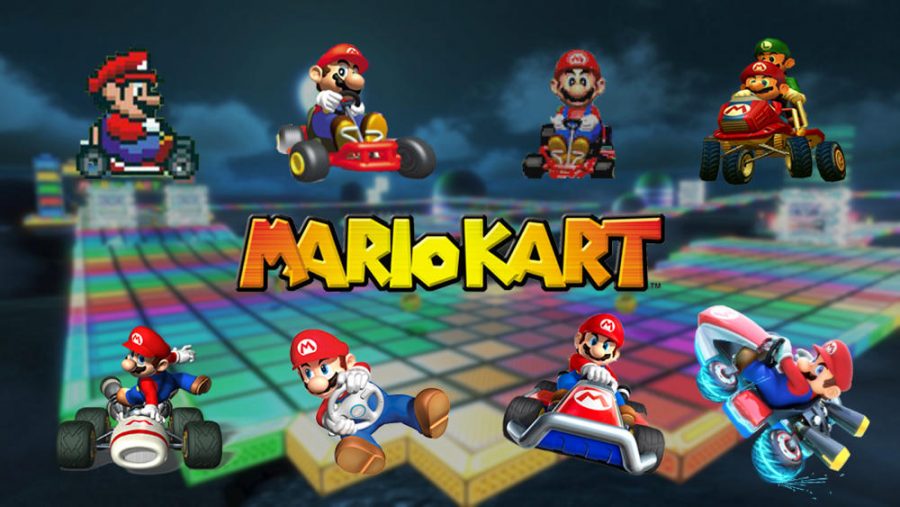Racing to the Future of Gaming
Photo Credit: (Courtesy of DoubleUpGaming.com)
Marketed as a spin off from Super Mario 27 years ago, the popularized Mario Kart brand has developed fourteen games since its original release.
October 22, 2019
Appealing to the existing Super Mario audience, Nintendo’s Super Mario received worldwide success among children and teens since its original release in 1992.
Innovating car racing games, the original Super Mario Kart, designed in two dimensional picture, featured a split screen compatible to the Super Nintendo Entertainment System console. In single player mode, players could challenge themselves against computer opponents in multiple races in each cup. Alternative game plays included Time Trial Mode, where one would attempt to complete the race as fast as possible, Multiplayer Mode, which included a one-on-one race against another opponent, and finally a Battle Mode which focused on popping the opponents’ ballons.
The games’ instant popularity and positive critiques led to its next release, Mario Kart 64 in 1996. Now, with three dimensional imaging, consumers were drawn to the new futuristic look available for Nintendo 64 consoles which presented for the first time, new power items, and many new popular characters.
The following games, Mario Kart: Super Circuit (2001) and Mario Kart: Double Dash (2003) introduced additional features compatible to the Game Boy Advance and GameCube devices. The former version allowed players to unlock races and customize characters for the first time, while Double Dash revealed new, ‘core’ players and powers designed specifically for each character.
Mario Kart DS and Mario Kart Wii, released in 2005 and 2008, tend to be the most recognizable for current high school students who grew up in the growing video game culture. Mario Kart DS, available on Nintendo DS handheld devices, offered an online multiplayer mode for the first time. Three years later, Mario Kart Wii broke many barriers with its newest Wii MotionPlus control technology.
Avary Spoja, a sophomore at Boise High, recalled, “we had just gotten the Wii, and that’s like the first game that we had gotten. I played with all my siblings, and of course, my older siblings won and I was really mad at it at the time, but I just got addicted to it and we would always constantly play.”
Successive games included Mario Kart 7 (2011) available only on the Nintendo 3DS, and Mario Kart 8 (2014) compatible with Wii U and Nintendo Switch. Mario Kart 7 included a more realistic three dimensional depth perception. The next revision of the game also improved display quality and introduced a 200cc racing mode.
On September 25th, 2019 the long awaited Mario Kart Tour app, compatible with iOS and Android smartphones was released. Merely a week after its release, the new game accumulated 90.1 million downloads. “Once Mario Kart was said to be released, I pre-ordered it and I downloaded the second it came out and I’ve been playing ever since,” Avary disclosed.
Fellow sophomore, Logan Johnson mentioned, “I just recently whipped out my DS and started playing Mario Kart on there, now that the new Tour version is out on the iPhone, and that’s pretty fun.”
Some were frustrated by the absence of Luigi and the use of points instead of player race placement for final ranking. However, the game’s incorporation of enhanced graphics and simple controls, swayed the appreciation of many.
“I definitely believe that it could be more like the old game,” Avary contemplated, “they never get new maps, they just add stuff into them.” Though she disapproved of some updates, Avary adds, “I think just the process of the whole thing is really cool, because it keeps you addicted to it, and you want to level up and you want to get more characters.”
For twenty seven years, the Mario Kart series has successively captured its audience’s attention with modern releases appealing to new generations. Adapting to new technologies and competitive appeals, the game has managed to stay relevant amidst a fast moving video game culture.



